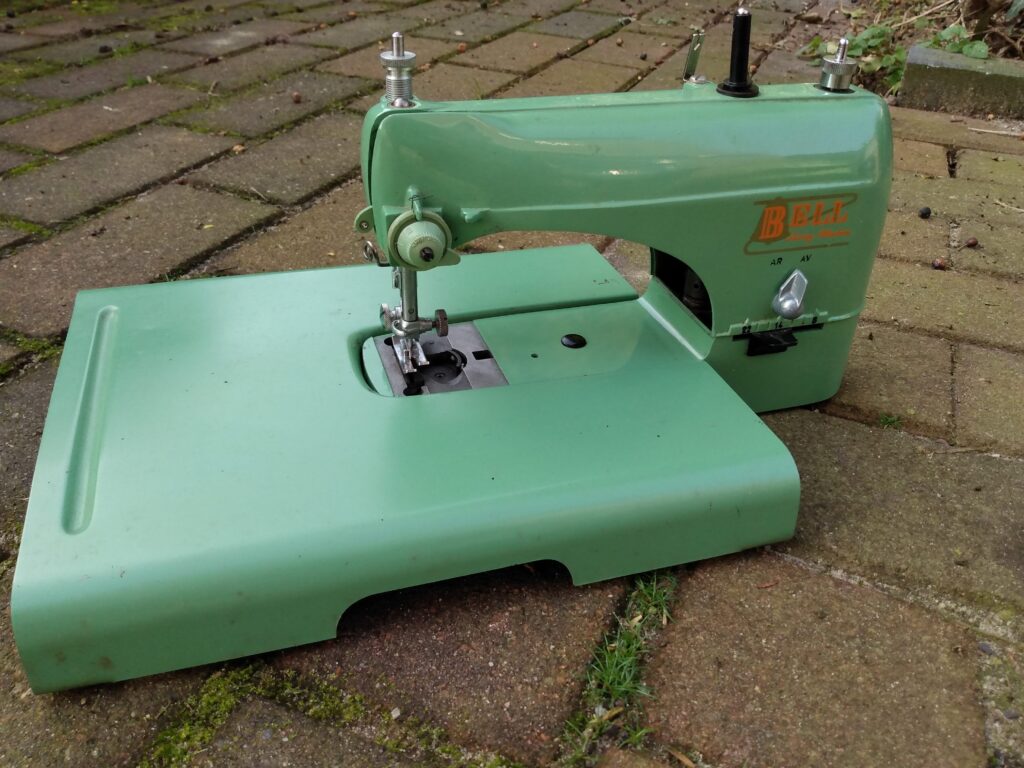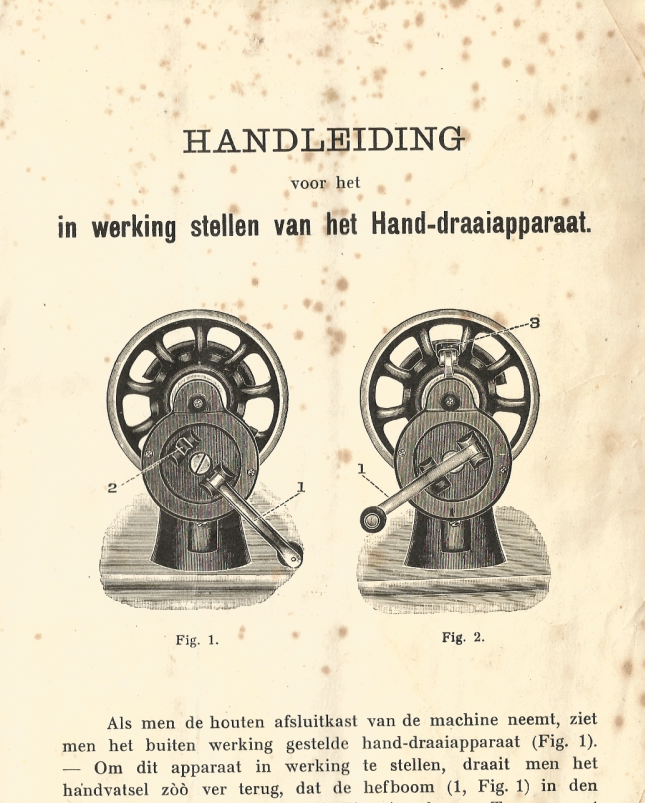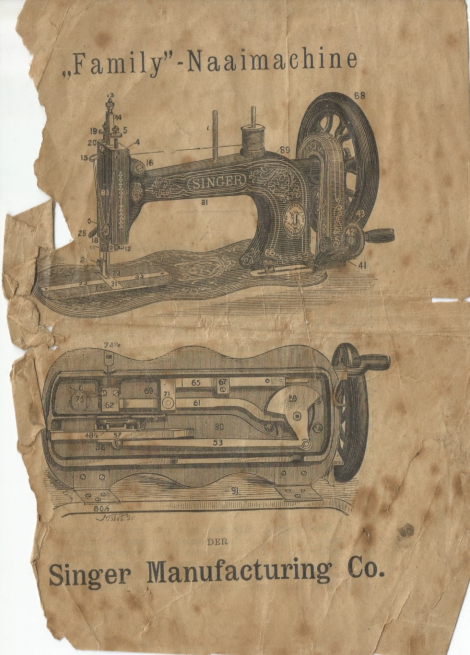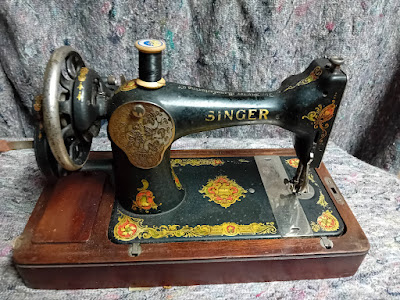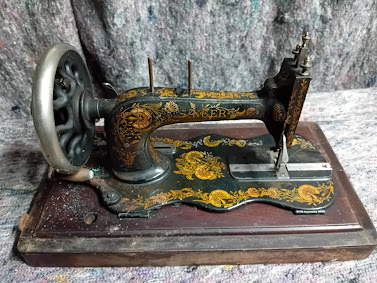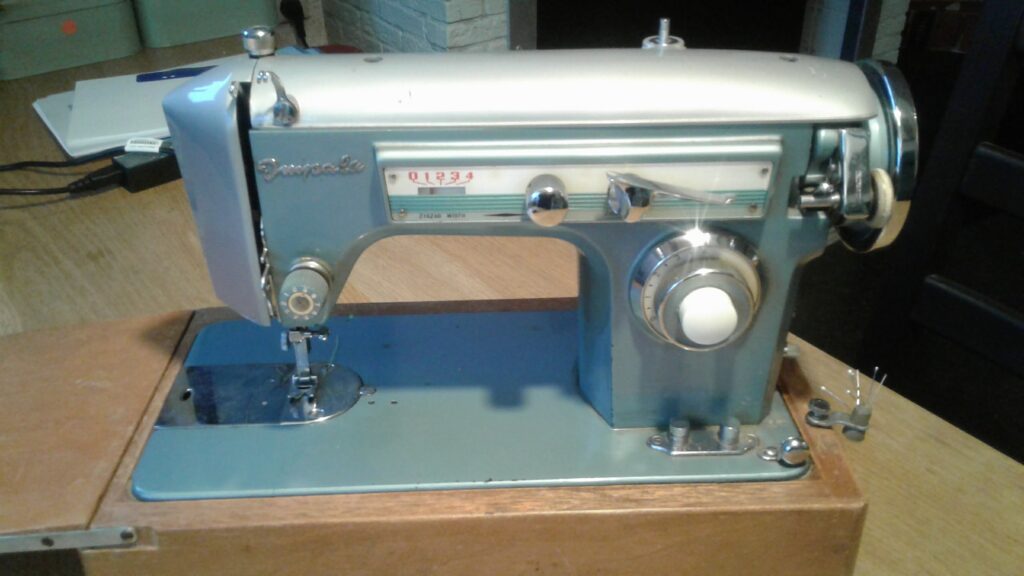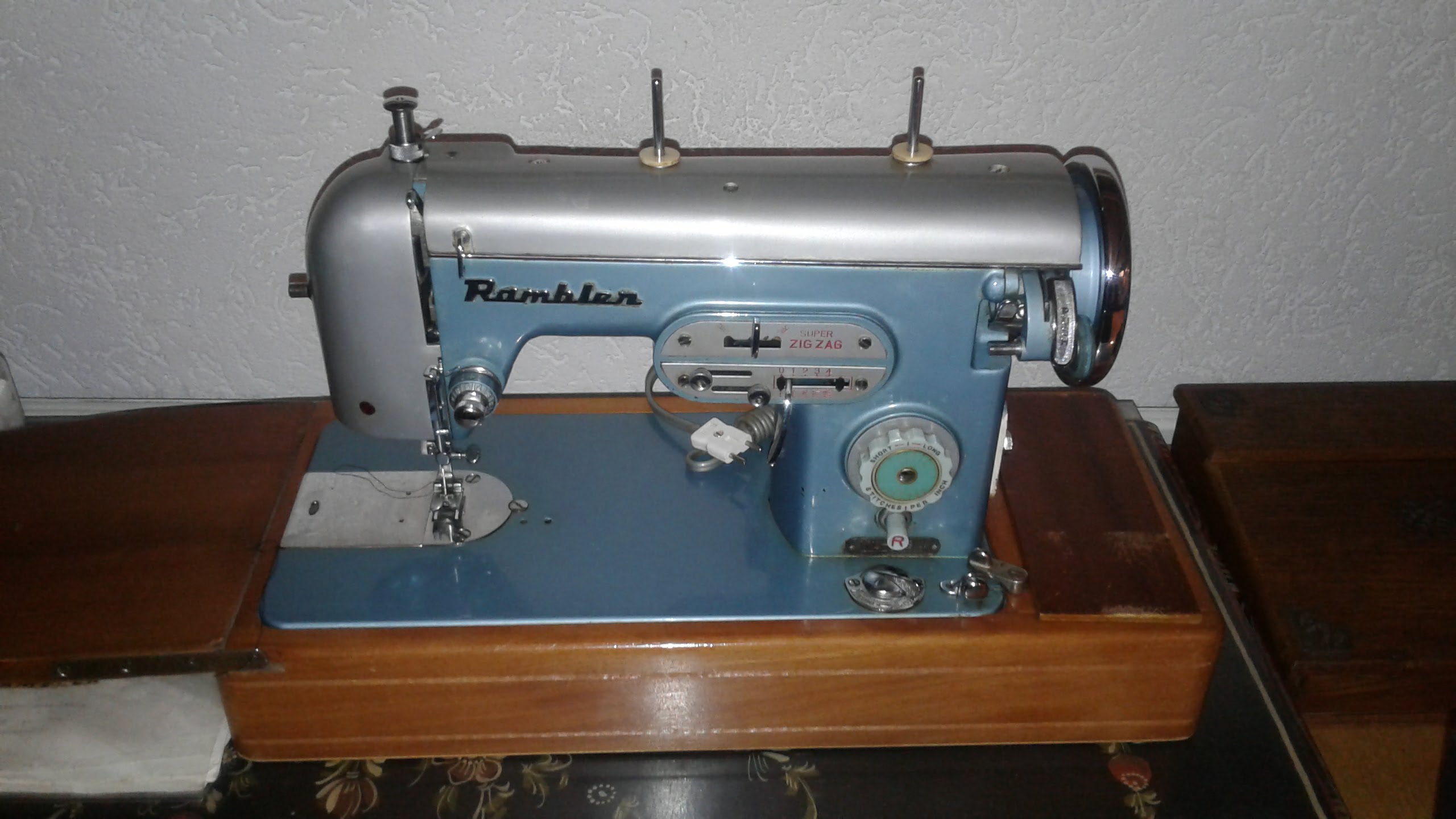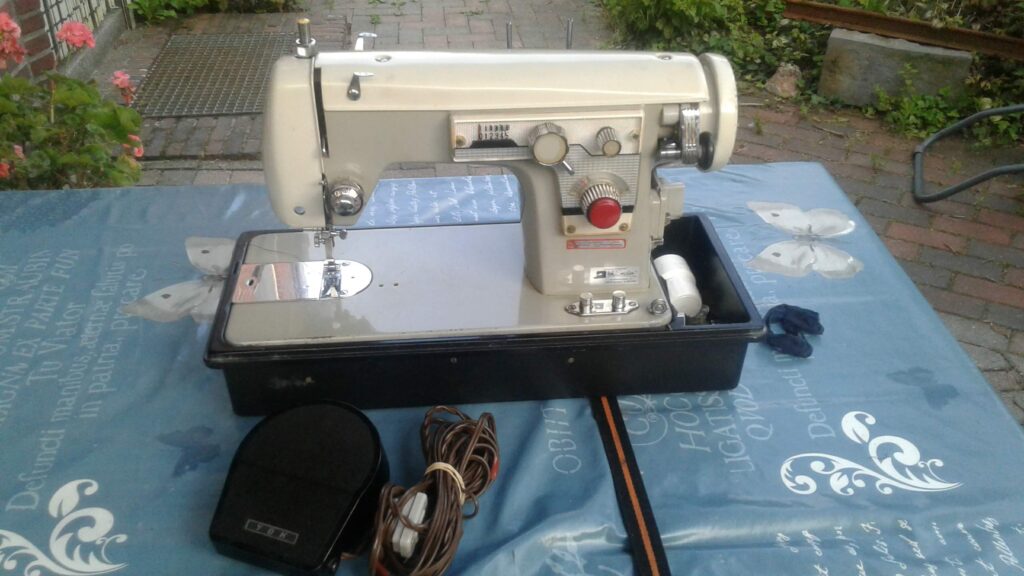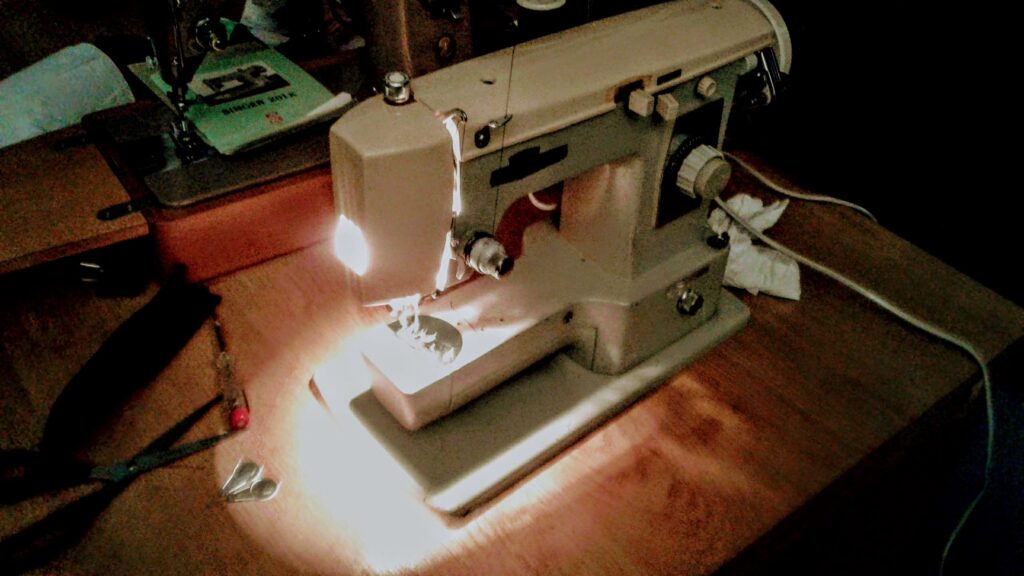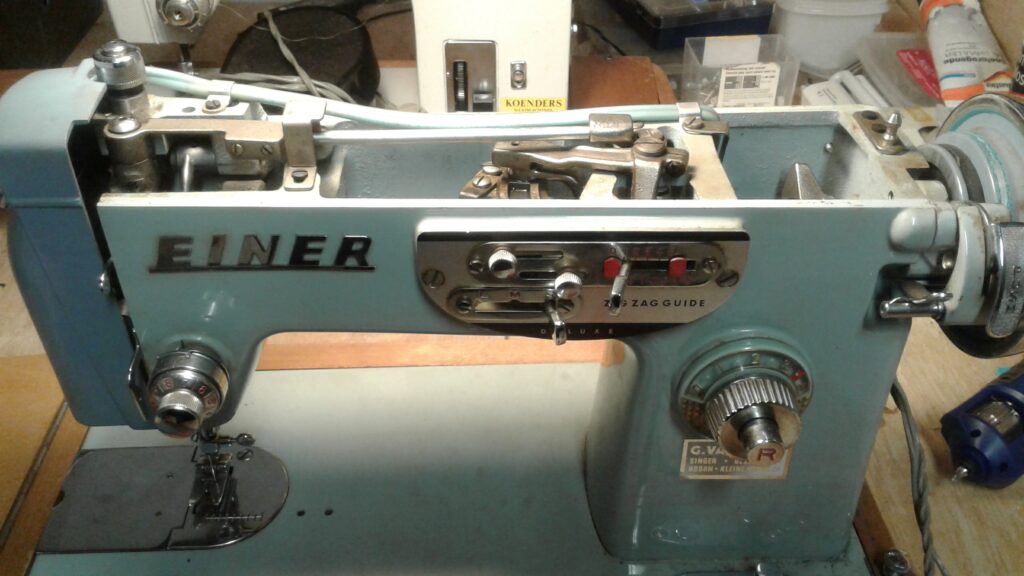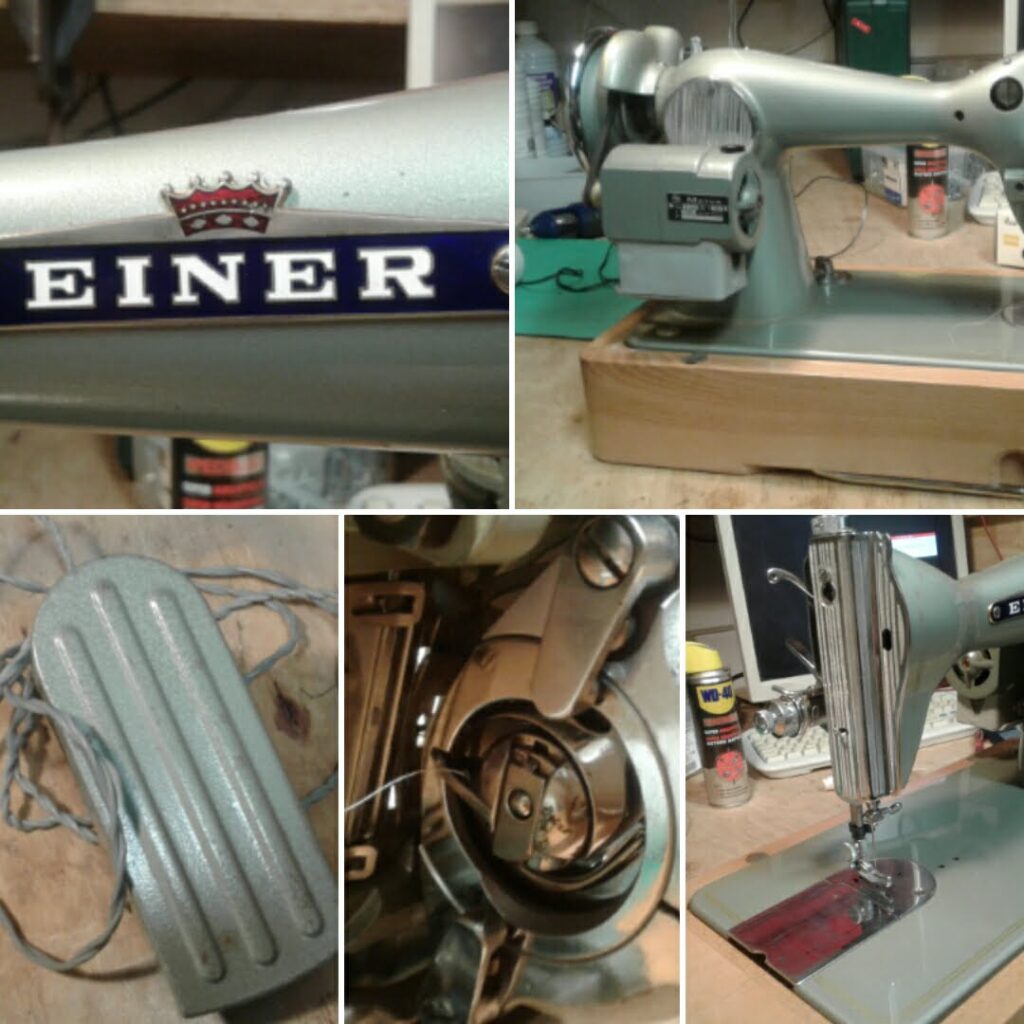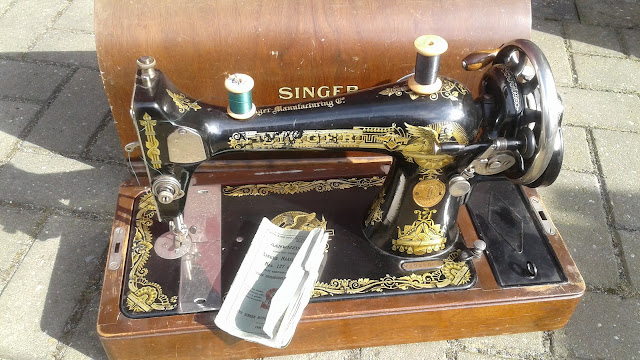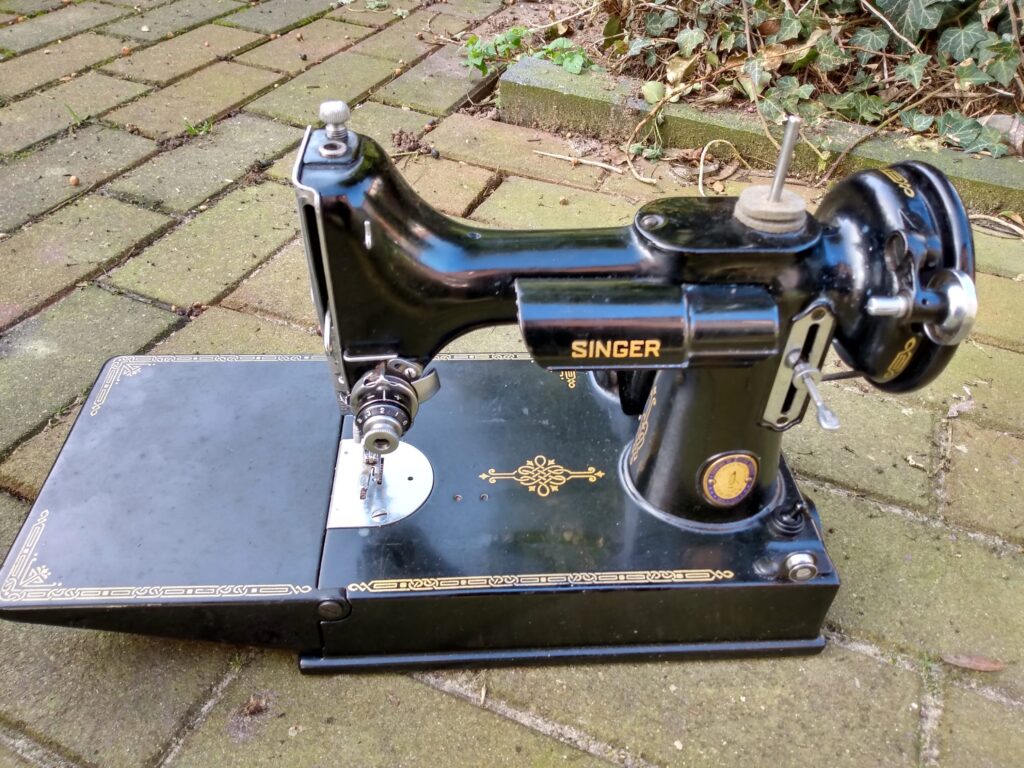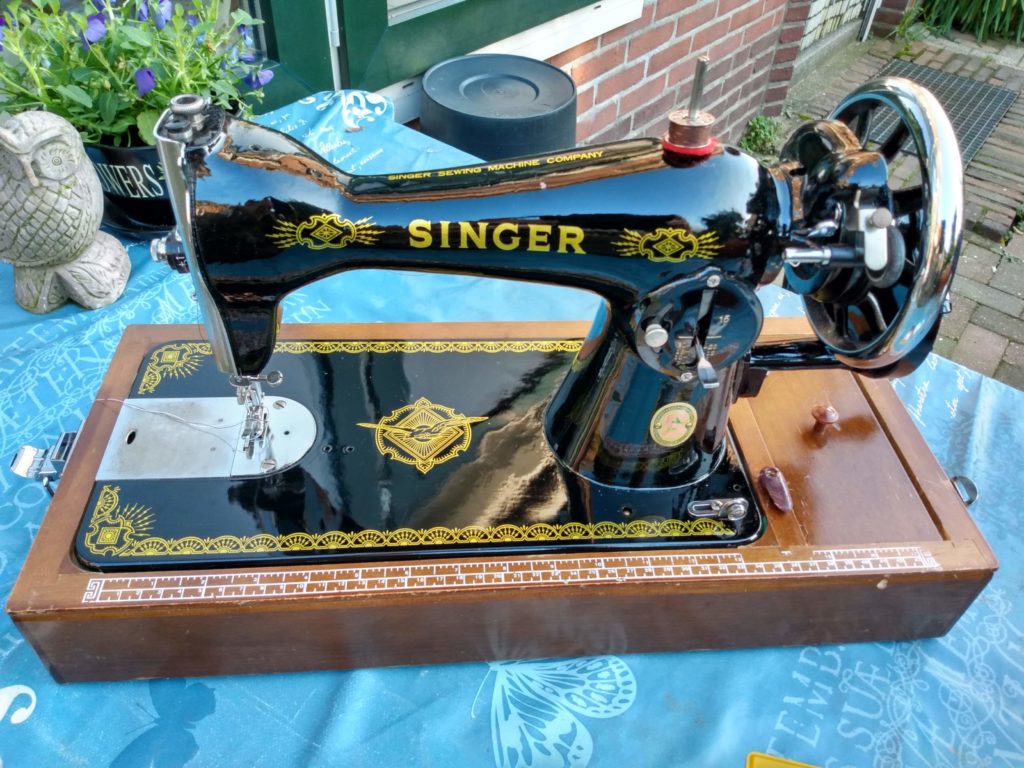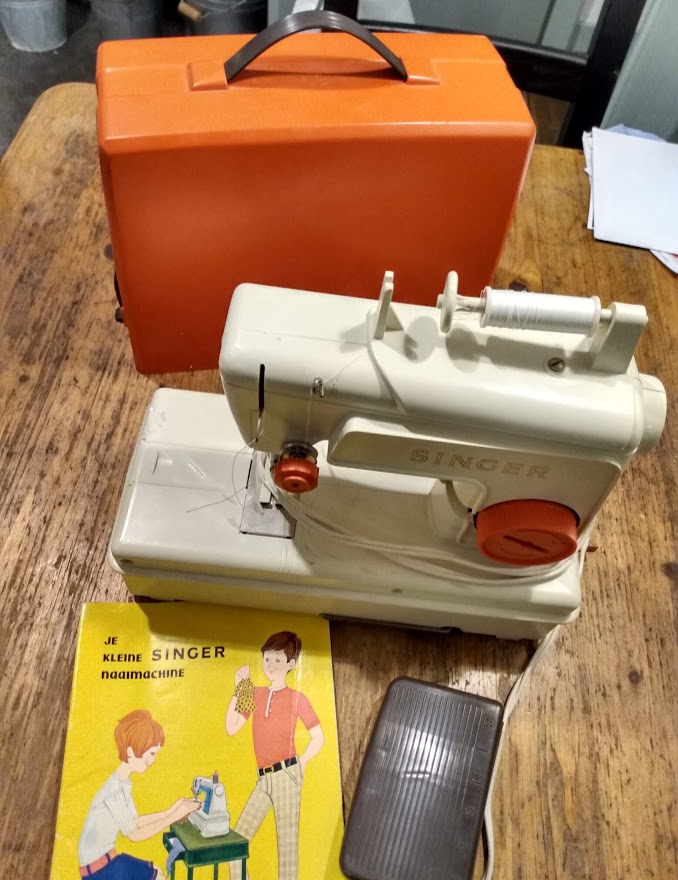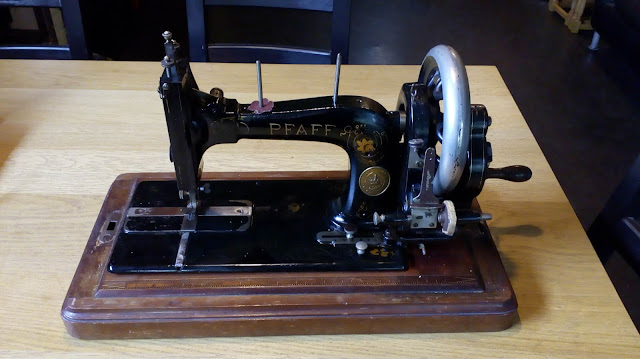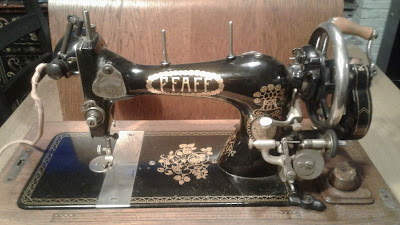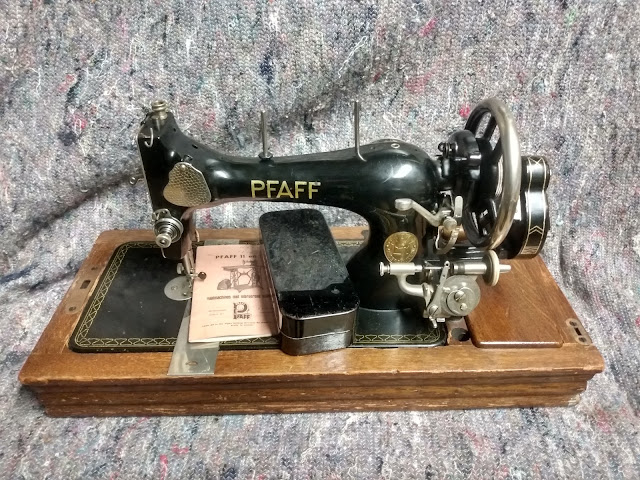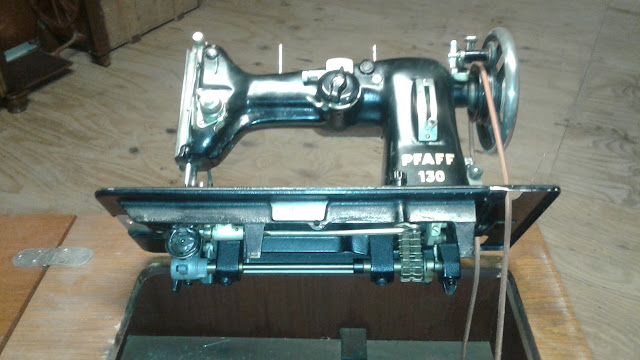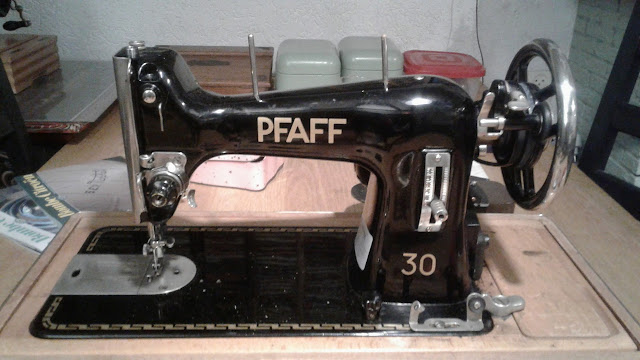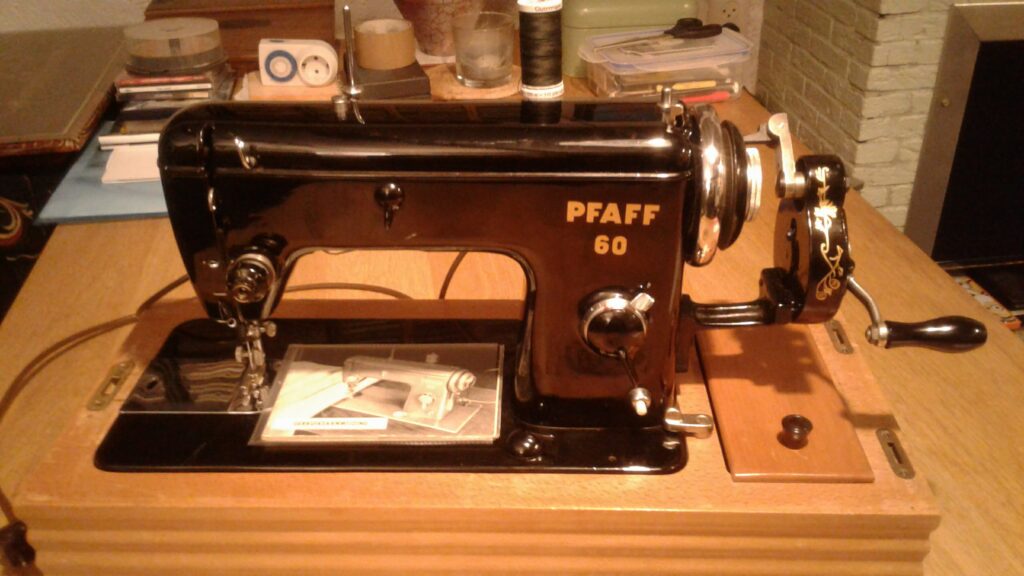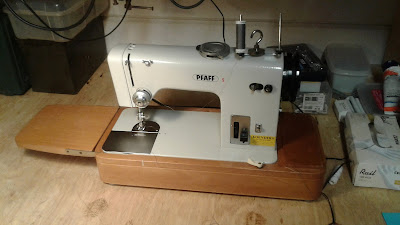How do old sewing machines fit into the rusty collection? I would say there are several reasons. The first reason is that I needed a sewing machine to do some repairs on the old cars. When I started to look for a sewing machine, I realised an old sewing machine would be strong enough for the fabric and leather of car upholstery. Researching old sewing machines revealed a whole universe of machines, manufacturers and history. And best of all: they were mechanical marvels and very affordable too.
Here’s a selection:
Latest additions
- Bell portable sewing machine by Mabel FranceSo what’s in this small white plastic case? Could it be one of these small recordplayers for “singles”, popular in the sixties? But there’s a very special little sewing machine neatly packed in here. It is called “Bell”. Though the Bell Micro MB was produced in the USA in the fifties, this one was manufactured […]
- Phoenix 38 sewing machine 1936Here’s a big and beautiful, but rough Phoenix 38 sewing machine manufactured in 1936 by the Baer & Rempel Sewing Machine Company. This fairly large machine was considered a medium type and could sew up to 4,500 stitches per minute. It is a double-cycle,rotary hook machine.
- Singer 128k Dutch user Manual PDFHere’s the well worn Dutch language version of the manual for our 1913 Singer 128k
- Singer 12 New Family 1898 Dutch Manual PdF
- Singer 128 1913This is a nice Singer 128 manufactured at the Clydebank factory in the second half of 1913.
- Singer 12 New Family 1898Two Singer sewing machines were very kindly donated to the Rusty collection Sewing Machine section. The first is a Singer Twelve New Family, Manufactured in 1898, making this the latest of our three Twelves. Though dusty and slightly damp, the decorations on this machine are mostly in good condition. Here you can browse the Dutch Singer […]
- Packard Zig Zag deluxe treadle machineThis Deluxe Packard is another Japanese American style machine. Though there is an electric light, it is a true treadle machine. Chrome controls and dials look very automotive on our Packard.
- Impala Zig Zag deluxeImpala Zig Zag Deluxe, another brand name used for a car. Metallic two tone paint and “speedometer” take the classic car theme to a new level.
- Rambler Super Zig ZagRambler Super Zig Zag Japanese clone. These very nice Japanese sewing machines were offered with various glorious names after ww2. Some even had car brand names or names that were very similar to car brand names.
- PMC Golden Stitch This PMC Golden Stitch flat bed machine is very similar. Probably manufactured before 1964 according to rubber stamped service dates on the machine. A simple flatbed machine on a plastic base, but still with elaborate dials and chrome ” up” and ” down” controls.
- Victoria Free arm sewing machineThis Victoria is a later Japanese free arm machine. Still quite heavy and internally all metal, but the badge is just a sticker, there are a few plastic knobs and buttons and the colour is a less fetching two tone
- Einer Deluxe Zig Zag ca 1960This Einer must be our heaviest machine. You can see how the Singer clone evolved into a much larger and elaborate machine. They even included zig zag features. Even though the machines were cheaper than the Singers and Pfaffs, they were good quality and sewed well. This strong and heavy Einer Deluxe Zig Zag sewing machine came to me […]
- Einer Japanese Sewing machine (early shape)The Japanese Sewing machines This Einer must be close to the earlier Japanese copy of the Singer 15. The tensioner is still at the left of the machine and the body shape is very similar to the Singer. Don’t let the Germanic name fool you. It’s built in Japan by Toyota, Brother or one of the other […]
- Anker RR 1956
- Anker Treadle class 15 sewing machine
- Bell portable sewing machine by Mabel France
- Borletti (ca 1958)
- Chinese Cobbler machine
- Dabla De Luxe
- Eduard Rühl by Winselmann 1920/30s
- Einer Deluxe Zig zag Sewing machine Ca 1970
- Einer Deluxe Zig Zag ca 1960
- Einer Japanese Sewing machine (early shape)
- Elna 2 supermatic zigzag 1958
- Elna Grasshopper 1946
- Elna Lotus (ca.1970)
- Essex Miniature Sewing machine 1946-1956
- Frister & Rossmann Saxonia
- Gazelle “Primatic LP” 1958
- Gazelle Vibrating shuttle
- General Electric Sewhandy( ca 1930)
- Gritzner Extra 1925
- Gritzner GSZ
- Gritzner R. A 1927
- Gritzner TS. 1899
- Hestia by Helvetia
- Impala Zig Zag deluxe
- Jones & Co. Serpentine or Swan neck (ca. 1891)
- Kayser Zigzag
- National Helvetia
- Packard Zig Zag deluxe treadle machine
- Pfaff 11 1929
- Pfaff 11 1937
- Pfaff 130 treadle machine 1951
- Pfaff 30 1952
- Pfaff 60 1955
- Pfaff 9 1960s
- Pfaff B 1891
- Phoenix 38 sewing machine 1936
- PMC Golden Stitch
- Rambler Super Zig Zag
- Regina Toy Sewing machines
- Seidel & Naumann
- Singer 12 K New Family 1887 & 1877
- Singer 12 New Family 1898
- Singer 12 New Family 1898 Dutch Manual PdF
- Singer 127K Vibrating shuttle machine 1925
- Singer 128 1913
- Singer 128k Dutch user Manual PDF
- Singer 15 NL-K “Nostalgia” series Taiwan 1970s
- Singer 15D Treadle Ca. 1910
- Singer 201K Alloy version1956
- Singer 221K Featherweight (Centennial) 1951
- Singer 28k Vibrating shuttle machine Ca 1894
- Singer 66K 1927
- Singer 99K 1955
- Singer lock stitch toy sewing machine
- Tailor bird (ca 1950)
- Victoria Free arm sewing machine
- Ward Arm & Platform Sewing machine
- Wilhelmina ca 1918
- Winselmann
Categories
- Bell
- Sewing machines
- Anker
- Borletti
- Chinese Cobbler
- Dabla
- Dürkopp
- Einer
- Elna
- Frister & Rossmann
- Gazelle
- General Electric
- Gritzner
- Haid und Neu
- Helvetia
- Hestia
- Impala
- Japanese Clones
- Jones
- Kayser
- Manuals
- Miniature sewing machines
- Muller
- Packard
- Pfaff
- Phoenix (Baer & Rempel)
- PMC
- Rambler
- Regina
- Saxonia
- Singer
- Tailor Bird
- Victoria
- Ward
- Wilhelmina
- Winselmann
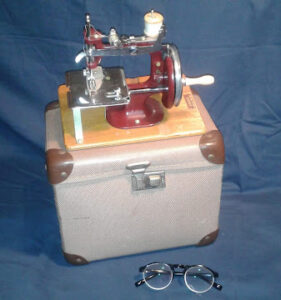
Singer
- Singer 12 K New Family 1887 & 1877
- Singer 28k Vibrating shuttle machine Ca 1894
- Singer 127K Vibrating shuttle machine 1925
- Singer 15D Treadle Ca. 1910
- Singer 66K 1927
- Singer 99K 1955
- Singer 221K Featherweight (Centennial) 1951
- Singer 201K Alloy version1956
- Singer 15 NL-K “Nostalgia” series Taiwan 1970s
- Singer lock stitch toy sewing machine

